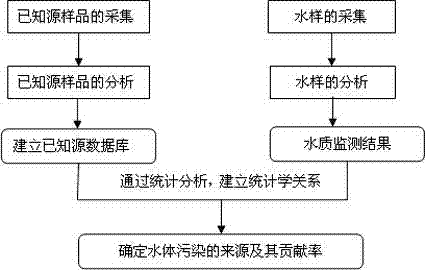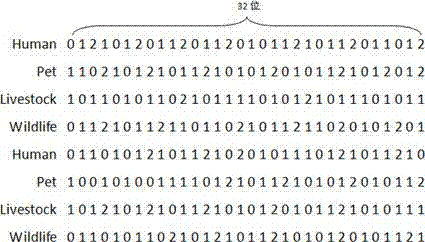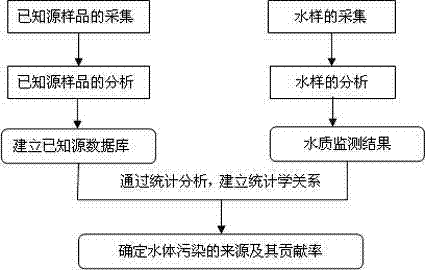Method for tracking bacterial non-point pollution source
A non-point source and pollution source technology, applied in biochemical equipment and methods, special data processing applications, microbial measurement/inspection, etc.
- Summary
- Abstract
- Description
- Claims
- Application Information
AI Technical Summary
Problems solved by technology
Method used
Image
Examples
Embodiment 1
[0067] The Hujiashan River Basin in Danjiangkou Reservoir Area is the research area, with an area of 48km 2 , using the non-point source tracing technology of bacterial sources, a database of known sources in this watershed was established. The types and proportions of antibiotics used are: rifampin (5, 10, 15, 20ug / ml), oxytetracycline (2, 4, 8, 12ug / ml), streptomycin (4, 8, 12, 16ug / ml), cephalosporin (5, 10, 20, 30, 40ug / ml), erythromycin (20, 40, 60, 80ug / ml), tetracycline (2, 4, 6, 8, 14ug / ml) , neomycin (2, 4, 6, 8, 10ug / ml), a total of 7 antibiotics with 31 concentration gradients. The known source database divides pollution sources into four categories, namely people, livestock, poultry and pets, and consists of more than 80,000 data. After analysis, the established known source database has an average accuracy rate (ARCC) of identifying pollution sources of 86.4%.
[0068] Using the established database of known sources, the pollution sources of coliform bacteri...
Embodiment 2
[0070] This technology has been successfully applied in the Najin River Basin of the Songhua River Basin. The area of the Najin River Basin is 1306km 2 , through the analysis of the known sources of non-point source pollution in the watershed, the known source database of the Najin River small watershed was established, and the average accuracy rate (ARCC) of the database reached 87.2%. The types and proportions of antibiotics used were: rifampicin, streptomycin, cephalosporin, erythromycin, tetracycline, neomycin, a total of 6 kinds of antibiotics with 30 concentration gradients.
[0071] According to water sample analysis, human (Human) accounted for 38%, livestock (Livestock) accounted for 28%, poultry (Fowl) accounted for 18%, pets (Pets) accounted for 16% and The pollution source intensity and the contribution of various sources of coliform non-point source pollution in the Najin River small watershed were calculated. Human and livestock feces pollution is the main so...
PUM
 Login to View More
Login to View More Abstract
Description
Claims
Application Information
 Login to View More
Login to View More - R&D
- Intellectual Property
- Life Sciences
- Materials
- Tech Scout
- Unparalleled Data Quality
- Higher Quality Content
- 60% Fewer Hallucinations
Browse by: Latest US Patents, China's latest patents, Technical Efficacy Thesaurus, Application Domain, Technology Topic, Popular Technical Reports.
© 2025 PatSnap. All rights reserved.Legal|Privacy policy|Modern Slavery Act Transparency Statement|Sitemap|About US| Contact US: help@patsnap.com



